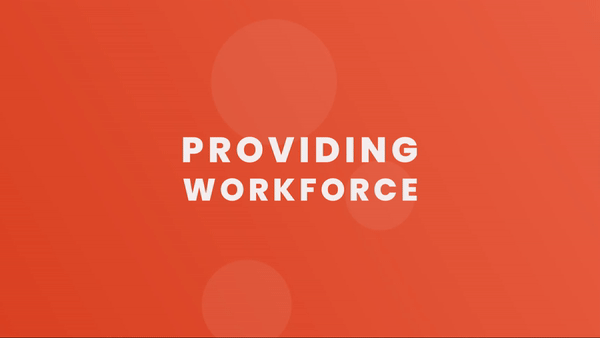There is a word getting more popular by the day that we quite like. As organisations and their environments become more complex and the levels of uncertainty they’re facing get worse, there is also a constant pressure for greater levels of operational efficiency and innovation with less. The response is usually to come up with a never-ending array of projects to answer these challenges and people have started to catch on that the way we’re doing things is getting “projectified” more and more on every level of society.
Once you realise a new project can be just around the corner as you’re trying to be done with one, there are evident implications that come with it: most of the work is now being carried out by discreet, isolated teams that dissolve when the end goals are met, rather than a linear mass production line system or method of organisation. To be honest, that doesn’t sound that desirable or productive. If it’s not, then why does this keep happening all over the world ? Is projectifying work a good thing? Can it be a good thing? I mean we like it so much that we even offer it as a service. So it better be. Let’s try to figure it out.
THE GOOD THING

With correlates like discreet and isolated, the concept certainly sounds far from anything good. Surely, when hearing descriptions, anyone would prefer shinier words like sustainibility and scalilibity. Even us. Our northstars, the we values we prioritize above all else, the words that you’re gonna hear over and over again no matter what we’re talking about are continuity and holism. The idea that we should disrupt the usual flow of action with extracted goals, beginning and end dates that split calenders in halves, sounds outright antithetical to the way we think we should do things. So, what gives? Of course, a reasonable chunk of the answer lies in the way that disruption is being done. But what’s even more essential is what lack of disruption means for the organisation, which sounds awful a lot like continuity itself.
IS CONTINUITY ALL THAT GREAT?
As elusive as it sounds, and for all of its merits, continuity is actually the natural order of things. All things have the tendency to stay the same if you let them. Unless you poke around, restructure or replace some parts, any organisation would continue to work in the same ways that it does without you having to do anything doing else. Well, if your integral personnel is getting poached, or they are leaving by the droves for some reason, you might have to do something about it. But the regular, sunny spring days will always remind of you of the one before.
There are good reasons for this. We are all creatures of habit. Routines shape our daily lives. Each time we might want do something out of the ordinary to change things up, organisational structures and hierarchies, rigid team formations, tools that we use, defined processes that we operate under, and limited communication channels, they all weight down on our shoulders. An onslaught of tasks and obligations occupying each day will prevent us from finding the time do new things. Even more so, responsibilities could be split between the actors so inconveniently sometimes, that it might be practically impossible for anyone to take initiative on certain matters.

There is continuity in inertia. Imagine an organisation: everyone knows some things are wrong, some even know what to do about it. But no one knows how to make sure it’s done. Maybe you don’t have to imagine at all, since you’ve witnessed this exact scenario many times before. So if what’s being continued is not that good after all, wouldn’t you say some disruption is due? At the end, we can say whether you would want someone to come and create a project out of your needs depends on which way you want to go as company. If your ambitions are not bound by your current circumstances, you might want to set up some goals, find the right people, and put them up to work on the exact problems.
HOW, THOUGH?
Now that we’re past through the initial question of whether this can be good or not, let’s say you’re one of those people who would like a nice little project to bloom somewhere within your organisation right about now. Awesome. But the decision to do that doesn’t actually solve the myriad of problems we outlined just now, does it?
You probably need a purpose-driven squad of resources with complementary talents and cross-cutting responsibilities. While not impossible, it’s not an easy task with everything else going on. If you feel like you need help with it, the most common solution to this challenge is usually outsourcing. Once you create your specifications of how you want every detail of your project to be like, there are millions of providers who will come to you with competing offers. There is an overabundance of help. But the specification of a project is just as much a problem as the execution, if not a bigger one. At the very least, it’s the phase where the larger part of the disruption takes place, so it’s where you’ll need those cross-cutting communication channels and all the most. Doesn’t that mean that it’s also the part where you would actually benefit from getting outside help?
We feel like it does. Our services are not about selling what we already do, it’s about figuring out what you actually need and providing exactly that. We didn’t end up with these set of offerings by happenstance, we thought long and hard about the best ways to get you where you need to be. And we’re sure providing projectification as a well-defined service is a critical part of making sure we acheive that goal.
THE CRITICAL JOURNEY
We will collaborate in each step, refine the business value needed, examine all the requirements, and chart out the project and the roadmap together. In each phase, we will detail each Statement of Work such that it actually reflects the work being done on your behalf. In each phase, we will find the right people and the right number of people. We will make sure they can integrate seamlessly into your flow so that they’re working efficiently and transparently.

What needs are we talking about? It could be as simple as making sure the additional contract workforce is compatible with IR35 regulations with well-defined goals that gives the resource the space to be independant, while also keeping them aligned with your vision. It could be finally transitioning your legacy codebase to a modern stack, that you’ve been putting off for too long because it’s so gargantuan of a task that you don’t even know how to start thinking about it. It could be the overhaul of operation processes and injecting your company with DevOps culture, a cloud platform migration, getting rid of pesky regressions with wide-spread testing adoption, or anything else that you can think of that gets lost in the chaos of operating your organisation.
THE REFINERY
There is a reason we are called REFINERI. The first of the 3 steps of our outsourcing approach, refine, is the most paramount. And it sometimes takes the shape of refining your requirements and needs to create an entire project from scratch. While the term projectification may have its detractors, we’re still convinced it has a great place for making workplaces and products better. We just want to pay the respect that it’s due with this article, and hopefully we’ll talk in separate articles about the shapes that our other two steps — create & empower — might take.
REFINERI partners with WTT to Redefine its IR35 Compliance & Workforce Services
Before that time comes, let us share our thanks for reading. If you’re curious about everything else we wanted to say, you can follow us at https://blog.refineri.co.uk and have a look at our other articles. Or just reach out, and let’s have a chat about anything on your mind. You can ping us at contact@refineri.co.uk and we’ll go over your concerns. Once again, thanks for taking the time to read this one. Cheers!